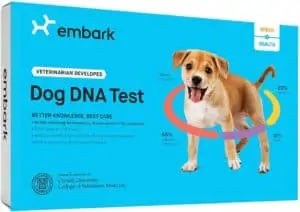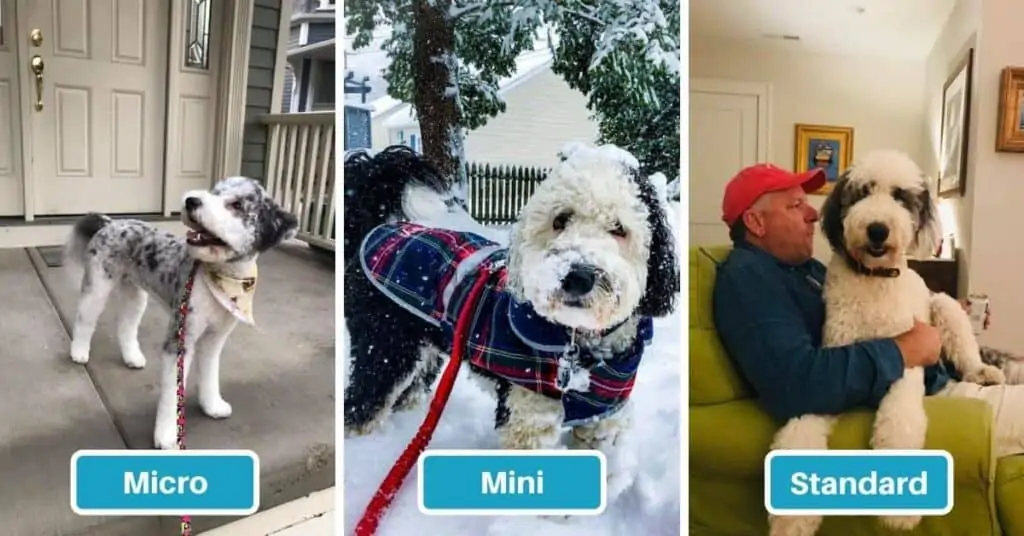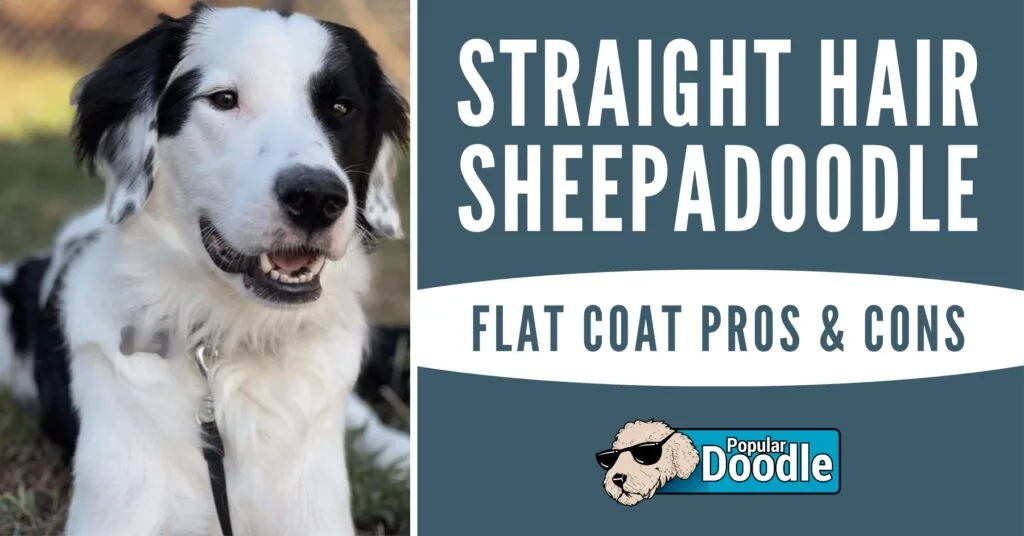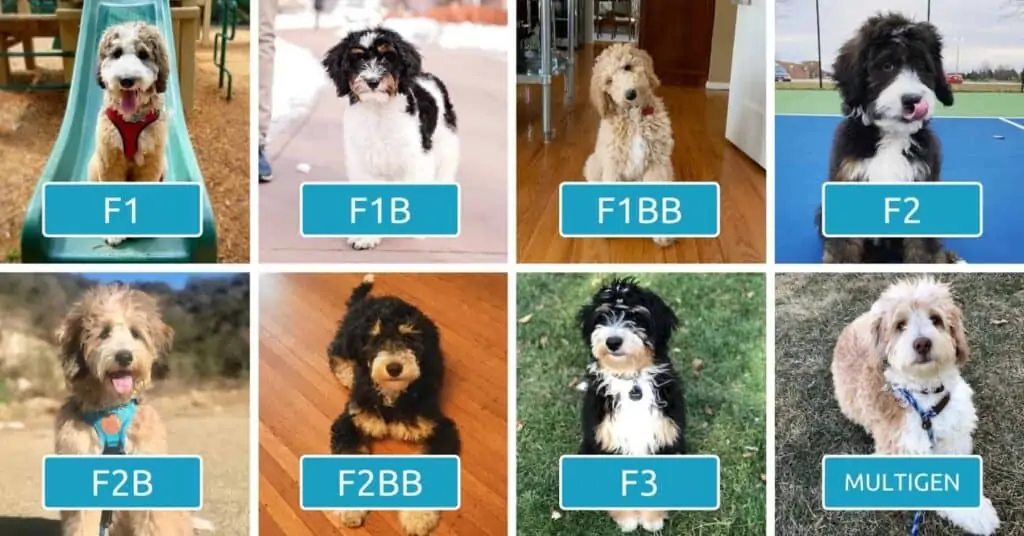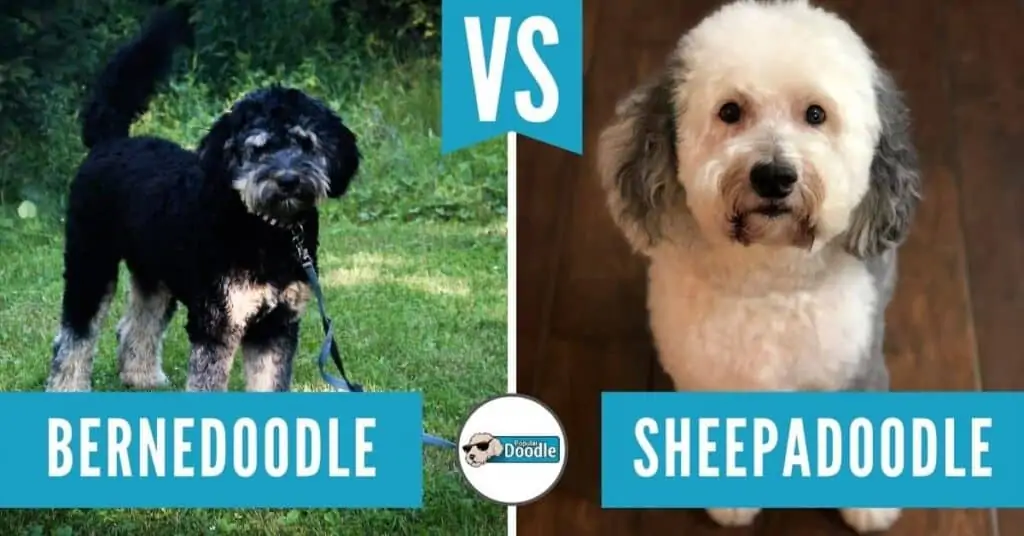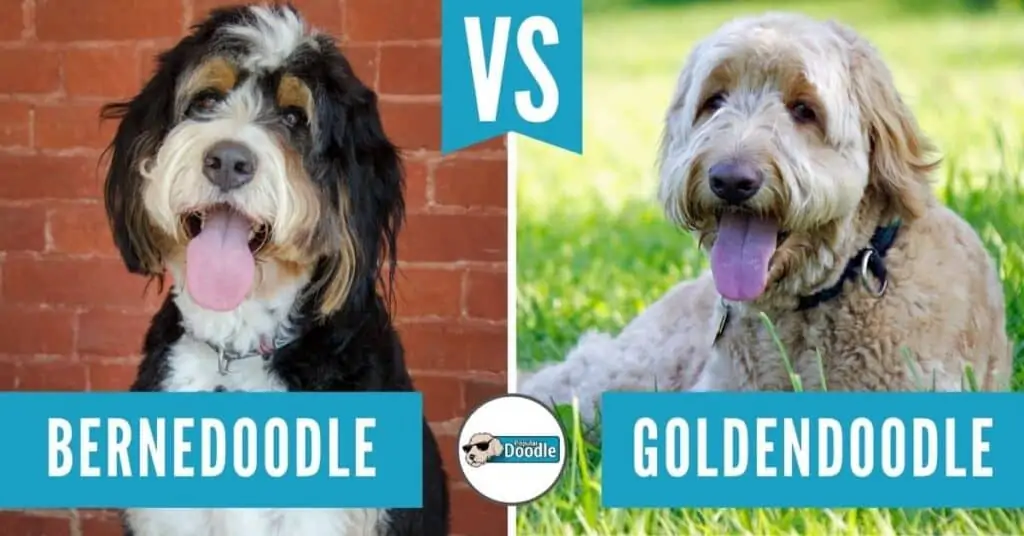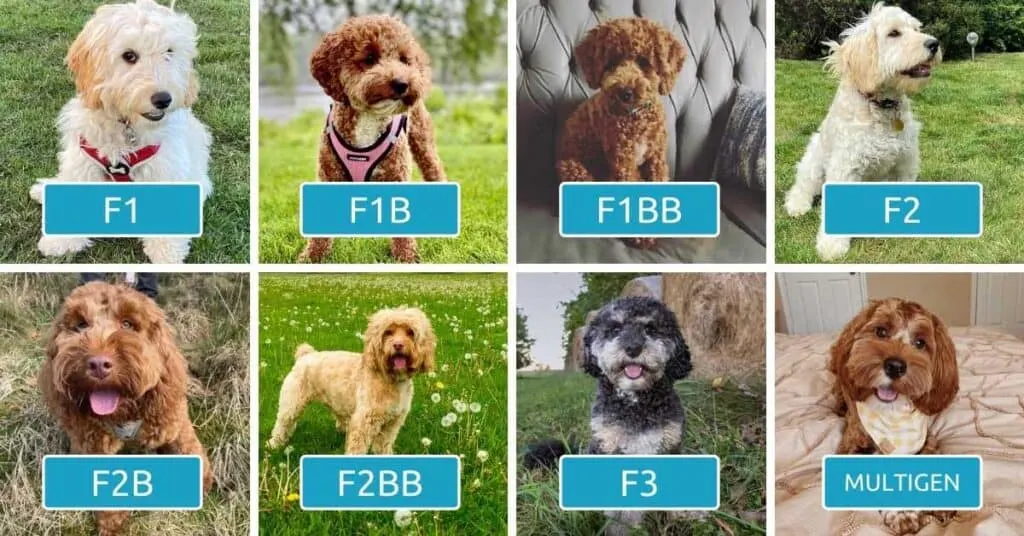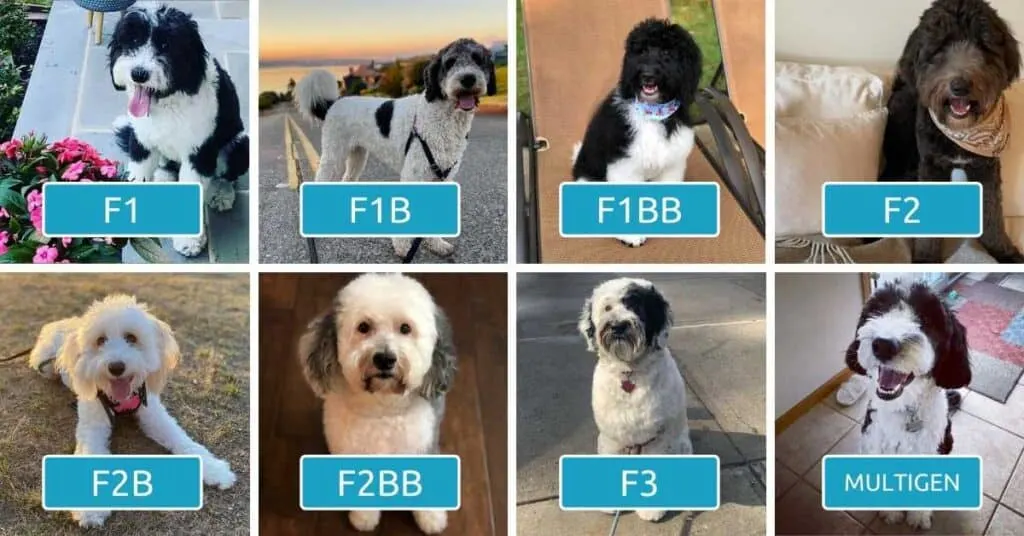
Sheepadoodle generations are often the most confusing aspect of adding a dog of this breed to your family.
You’ll often hear breeders tossing around terms like F1B, F2, and Multigen. However, very rarely do you get a thorough explanation of what they mean and how they’ll impact your new puppy.
In this article, we’ll help you decipher the “code” of Sheepadoodle generations and help you pick the best one for your family!
Why Do Sheepadoodle Generations Matter?
Put simply, Sheepadoodle generations help describe the ancestry of your dog. By doing so, they can give us an idea about their genetic makeup and how close to a purebred Poodle or Old English Sheepdog they may be.
With this information, you’ll have a better idea about your future Sheepadoodle’s exercise needs, size, appearance, and even health issues that could arise later in life.
Speaking of health issues, while Sheepadoodles are considered a fairly healthy breed, there is always the potential for accidents and illnesses to unexpectedly pop up over the course of your dog’s lifespan. That’s why we recommend that all owners of this breed consider getting pet insurance, which can cover up to 90% of these costly bills.
There are lots of companies to compare and get quotes from, however, two that many Sheepadoodle owners swear by are Healthy Paws and Embrace.
Labeling Sheepadoodle Generations
The labels that are used to describe Sheepadoodle generations seem intimidating, but they’re actually not so confusing! Let’s go over them piece by piece.
Letter “F”
You’ll see the letter “F” at the start of every Sheepadoodle generation. It is an abbreviation for the term “filial hybrid,” which simply means a mixed breed that resulted from two purebred breeds.
Number 1-3
The number directly following the letter “F” tells us which generation a Sheepadoodle is. One indicates first generation, two indicates second generation, and three indicates third generation. More on this later.
Letter “B”
After some generations you’ll notice a letter “B” at the end of the label. This letter indicates that the Sheepadoodle was backcrossed to one of the two original purebred breeds. So instead of breeding two Sheepadoodles together, you’d be breeding a Sheepadoodle with one of the parent breeds.
In the vast majority of cases, a Sheepadoodle will be backcrossed with a Poodle. However, there is what’s called a “Reverse F1B Sheepadoodle” which indicates that an F1 Sheepadoodle was backcrossed to the Old English Sheepdog instead.
If a generation label includes “BB,” it means that the Sheepadoodle was backcrossed twice.
Sheepadoodle Generations Chart
I created this table to help you visualize the most common pairings and the estimated DNA percentages for each generation of Sheepadoodle. It may be useful to reference this as you read the rest of this article.
Keep in mind, these percentages are theoretical percentages. Genetics are tough to predict and don’t always get divided evenly. For example, you may have more characteristics from your mother than your father even though your estimated DNA is 50% from each of them.
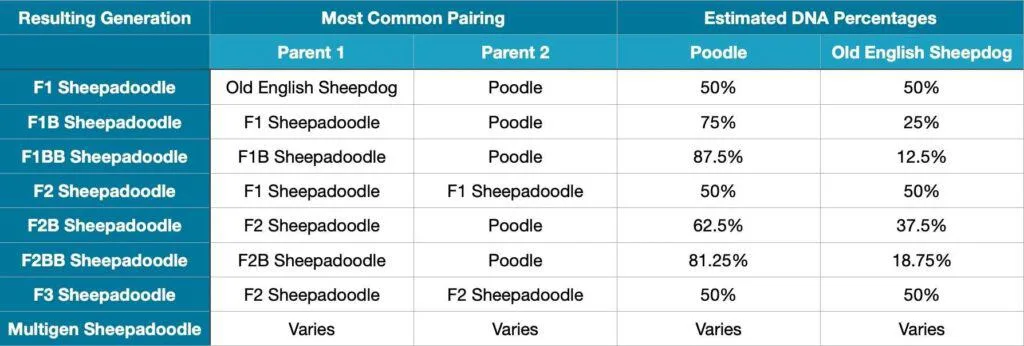
What is an F1 Sheepadoodle?
An F1 Sheepadoodle is a first generation cross between a purebred Old English Sheepdog and a purebred Poodle. This generation is estimated to inherit 50% of their DNA from each parent breed.
This is the most basic generation and the easiest to understand. You cross two purebred dogs to create a mixed breed that has half of each breed’s DNA.
F1 Sheepadoodles are the most common generation available and, as such, are also one of the least expensive. That doesn’t mean that they aren’t as good as other generations, however!
Since they have a roughly equal split of DNA from two breeds, first generation Sheepadoodles have the distinct advantage of a large amount of genetic diversity. High amounts of genetic diversity is often linked to a lower risk of some health problems many purebreds experience.
With a first generation, you often get that classic, teddy bear appearance that everyone loves! However, an F1 Sheepadoodle’s appearance can vary widely because you never know which breed a puppy will inherit more traits from.
Your puppy could have a curly, allergy-friendly coat similar to the Poodle or a straight, double coat like the Old English Sheepdog. While there are anomalies, odds are a puppy will be somewhere in the middle.
This means that F1 Sheepadoodles may be allergy-friendly but they likely won’t be hypoallergenic. They’ll probably shed less than a purebred Old English Sheepdog, but they’ll still likely shed at least a bit.
Related: Do Sheepadoodles Shed? The FACTS About Sheepadoodle Shedding
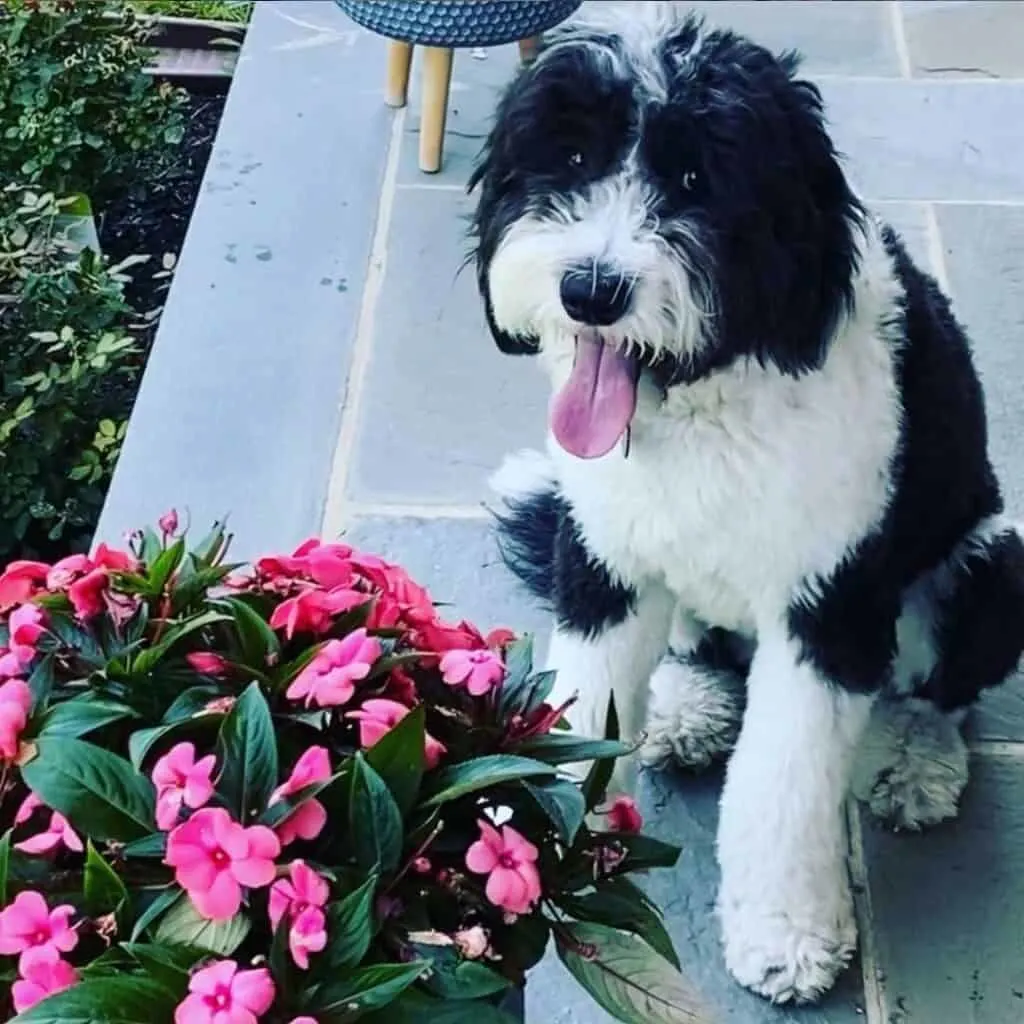
What is an F1B Sheepadoodle?
An F1B Sheepadoodle is produced by breeding an F1 Sheepadoodle back to one of the two parent breeds, usually a Poodle.
A “reverse” F1B Sheepadoodle means that an F1 Sheepadoodle was backcrossed to an Old English Sheepdog. This is less common than a traditional F1B, but this practice occurs far more frequently with Sheepadoodles than most other Poodle mix breeds.
The main reason for breeding a traditional F1B Sheepadoodle is to add more Poodle DNA into the mix. This is done in an effort to produce puppies that have the desirable hypoallergenic and non-shedding coat of the Poodle.
The additional Poodle DNA makes the traits of the F1B more predictable. For that reason, they’re a safer bet for being allergy-friendly and low shedding but still not guaranteed.
If you have a mild allergy-sufferer in your household or simply want to deal with less shedding, an F1B Sheepadoodle may be a good choice for you.
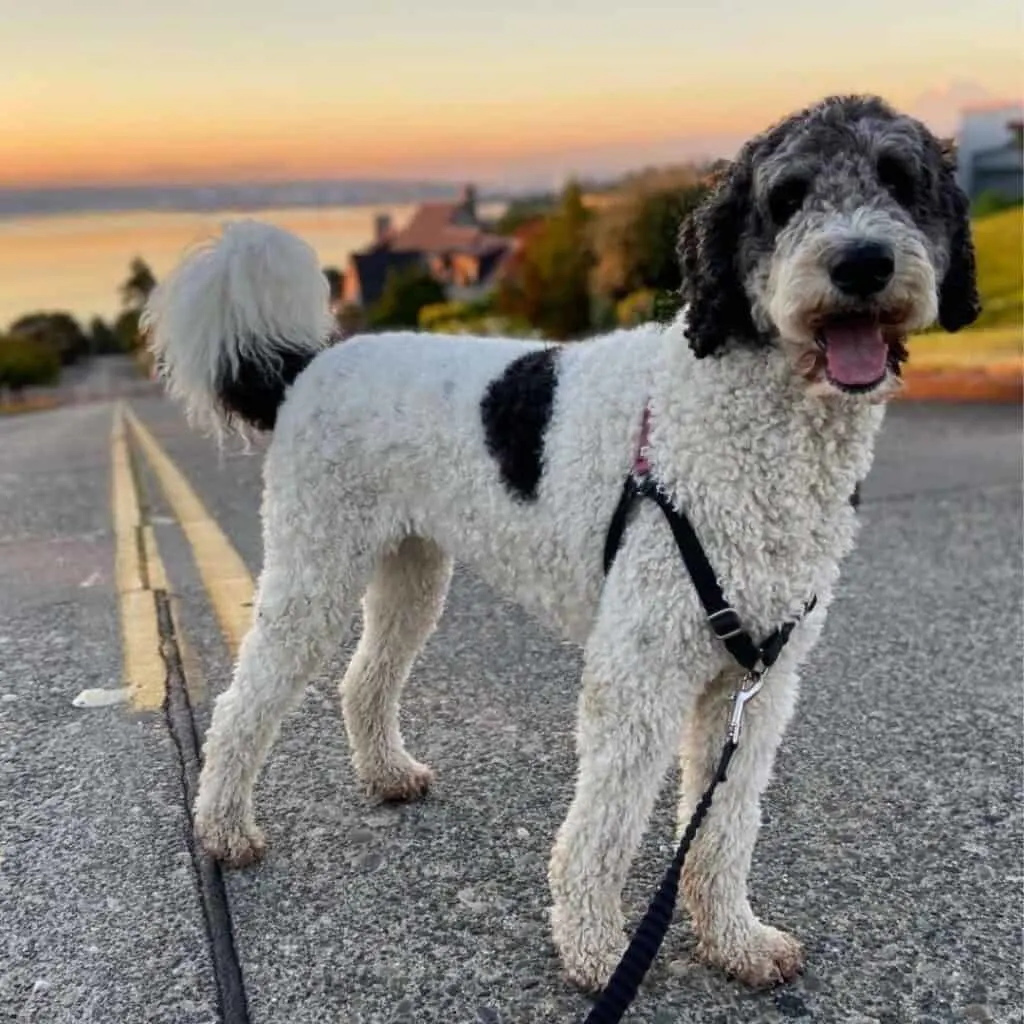
What is an F1BB Sheepadoodle?
An F1BB Sheepadoodle has been backcrossed to the Poodle twice. That means it’s the result of breeding an F1B Sheepadoodle with a purebred Poodle.
Due to the overwhelming amount of Poodle DNA in this generation, it’s the best possible choice for allergy-sufferers looking to get a Sheepadoodle puppy.
An F1BB Sheepadoodle has a theoretical DNA split of 87.5% Poodle and only 12.5% Old English Sheepdog. So while the potential for allergies and shedding still exists, it’s very low.
The downside to having an allergy-friendly coat similar to a Poodle is how hard it is to maintain. Keeping any Sheepadoodle free of matting and tangles can be a challenge, but especially the F1BB generation!
Frequent brushing can help combat this, but it’s also important to use the right tools. A generic brush from your local pet store probably won’t do the trick. I recommend using the Chris Christensen Big G Slicker Brush. It’s regularly used by professional groomers and has many very enthusiastic customers amongst Sheepadoodle owners.
While it may be on the expensive side, in my opinion, there’s no better brush for a Sheepadoodle’s coat than the Big G.
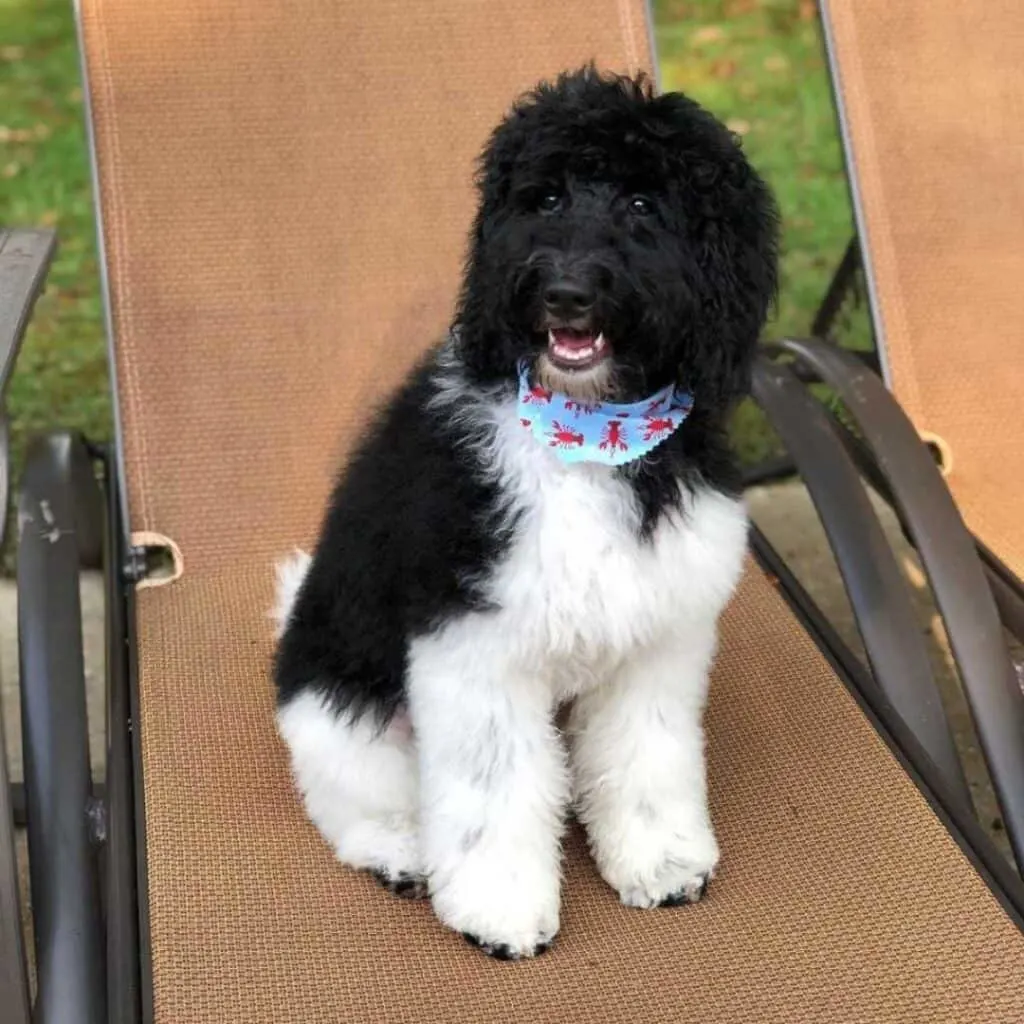
What is an F2 Sheepadoodle?
There are several parental combinations that can produce second generation Sheepadoodles. A litter of F2 Sheepadoodles can be bred by crossing an F1 with an F2, an F1 with an F1B, or an F1 with another F1.
This generation can be confusing to grasp because of how many different ways there are to breed it. No matter which combination of parents is used, second generation Sheepadoodles are hard to predict and can have a “grab bag” of traits from both purebred breeds.
More often than with other generations, F2 Sheepadoodles may have flat coats and looks similar to that of the Old English Sheepdog. Since many prospective owners choose a Sheepadoodle for the shedding and allergy advantages of the Poodle DNA, many breeders shy away from producing this generation.
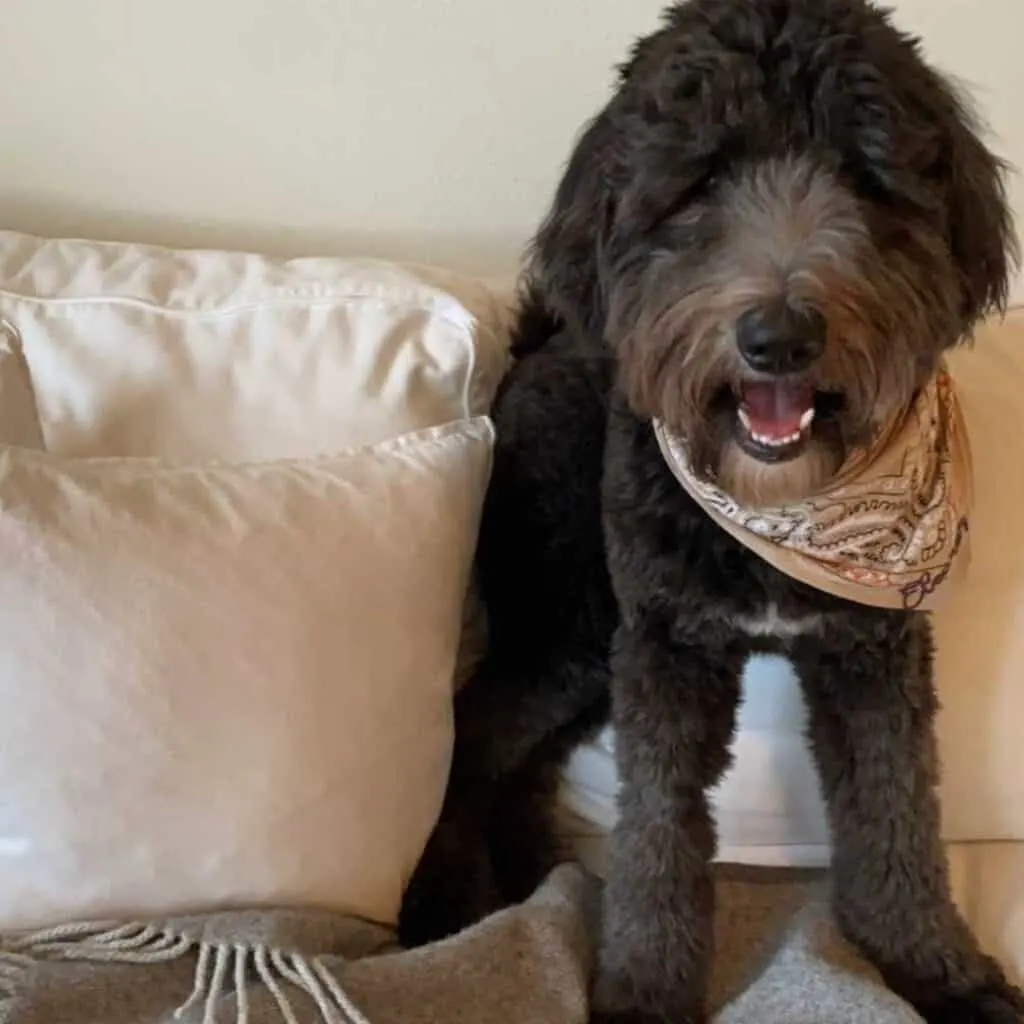
What is an F2B Sheepadoodle?
An F2B Sheepadoodle means a second generation Sheepadoodle backcrossed once to the Poodle.
While not as common as F1B Sheepadoodles, the F2B generation accomplishes the same goal. Backcrossing the Poodle skews the theoretical DNA percentages in favor of a more allergy-friendly and lower-shedding coat.
While more Poodle DNA results in a more predictable and often more desirable coat, you should be prepared for the additional maintenance and brushing required with this generation.
While this generation will likely be fine for mild allergy-sufferers, those with more serious reactions may benefit from choosing an F1BB or F2BB generation instead.
F2B Sheepadoodles can also be called “Multigen Sheepadoodles.” This term encompasses all generations beyond an F2.
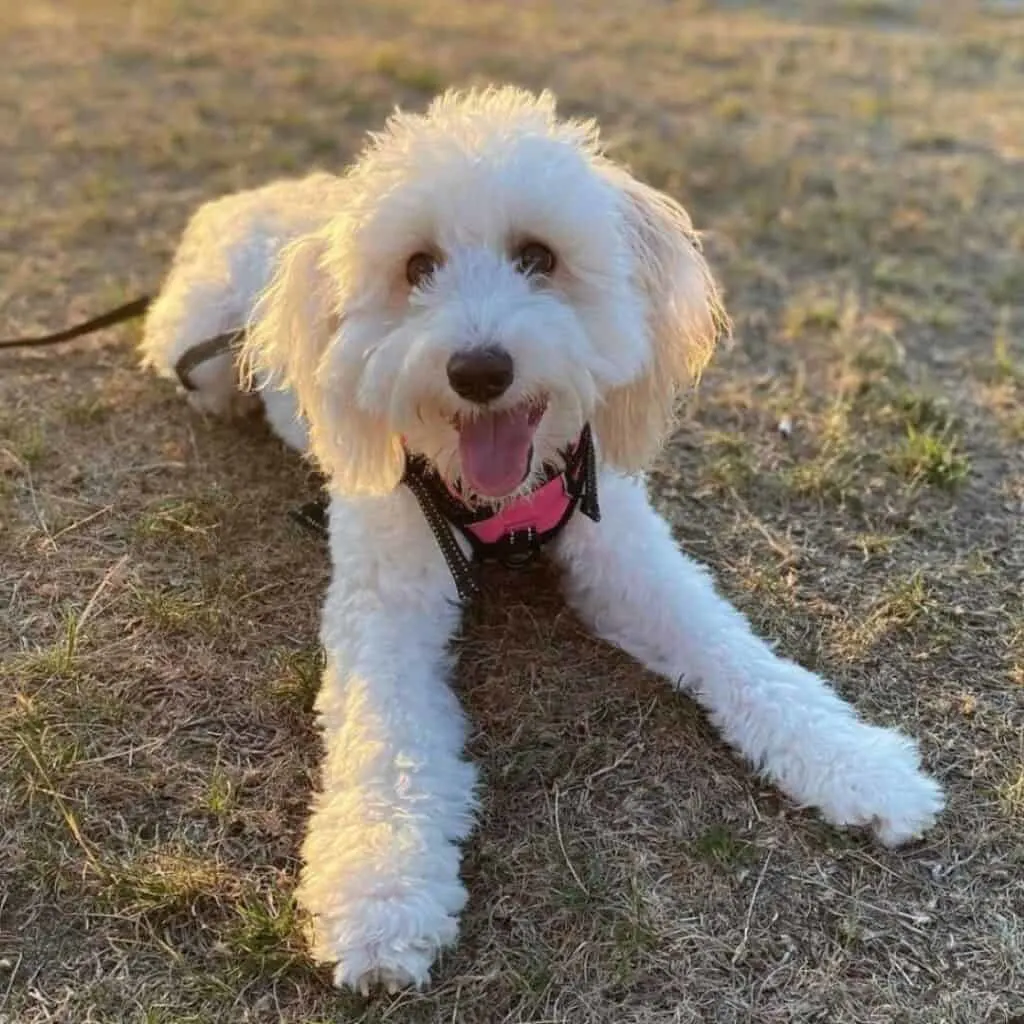
What is an F2BB Sheepadoodle?
An F2BB Sheepadoodle indicates that a second generation Sheepadoodle has been backcrossed to the Poodle twice. The parents would be an F2B Sheepadoodle paired with a purebred Poodle.
Like the F1BB generation, the F2BB Sheepadoodle adds in even more Poodle DNA making the overall DNA splits very lopsided in favor of the Poodle.
It’s another great choice for those who experience serious allergies and want the best odds of having a hypoallergenic and non-shedding dog. While those traits can never be guaranteed, when you have so much Poodle DNA, the odds are certainly in your favor.
This generation also falls under the “multigenerational” label because it’s beyond an F2.
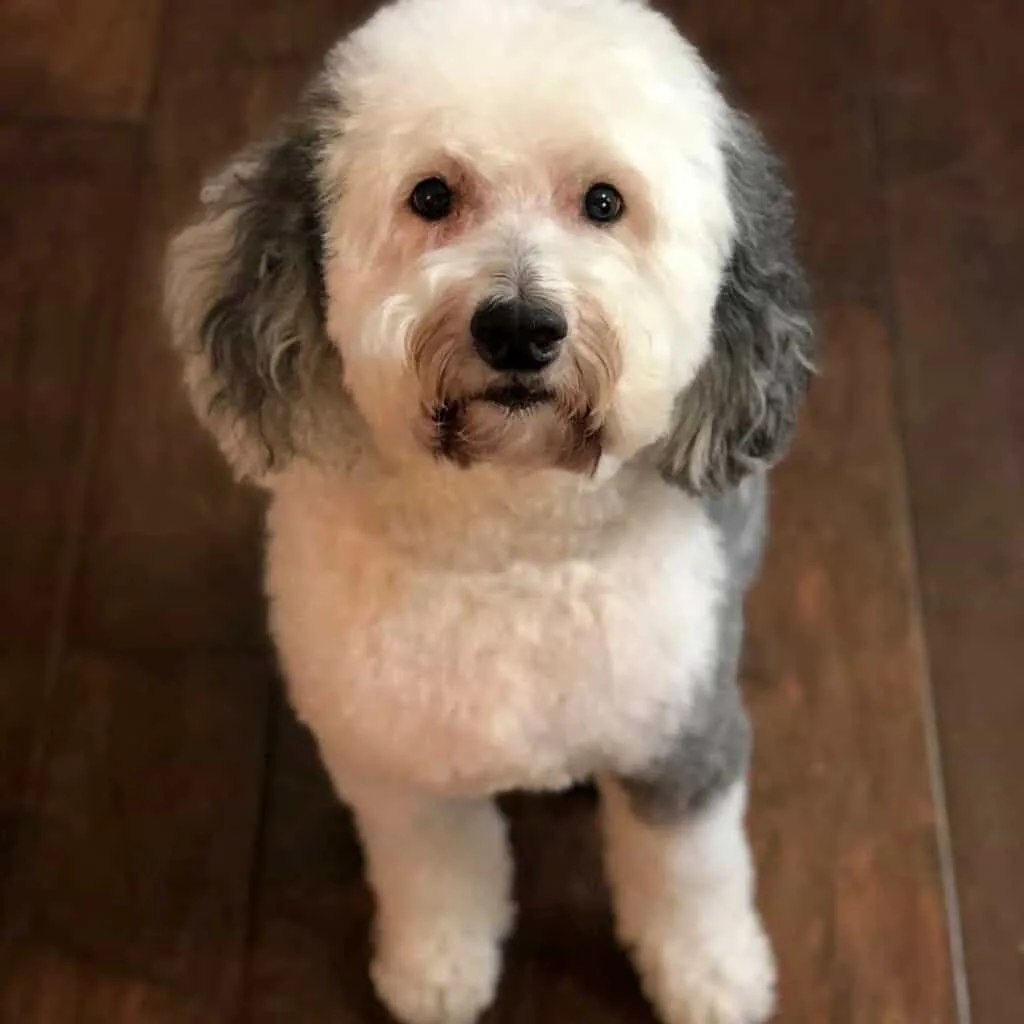
What is an F3 Sheepadoodle?
An F3 Sheepadoodle is a third generation Sheepadoodle. It can be the result of multiple parental combinations, but the most common pairing is two F2 Sheepadoodles
One of the least common generations, an F3 Sheepadoodle has the same drawbacks that the F2 does. Namely, the lack of consistent traits is why many breeders and prospective owners shy away from this generation.
An F3 Sheepadoodle is one of the generations that falls into the category of a Multigen Sheepadoodle. We’ll talk more about this next.
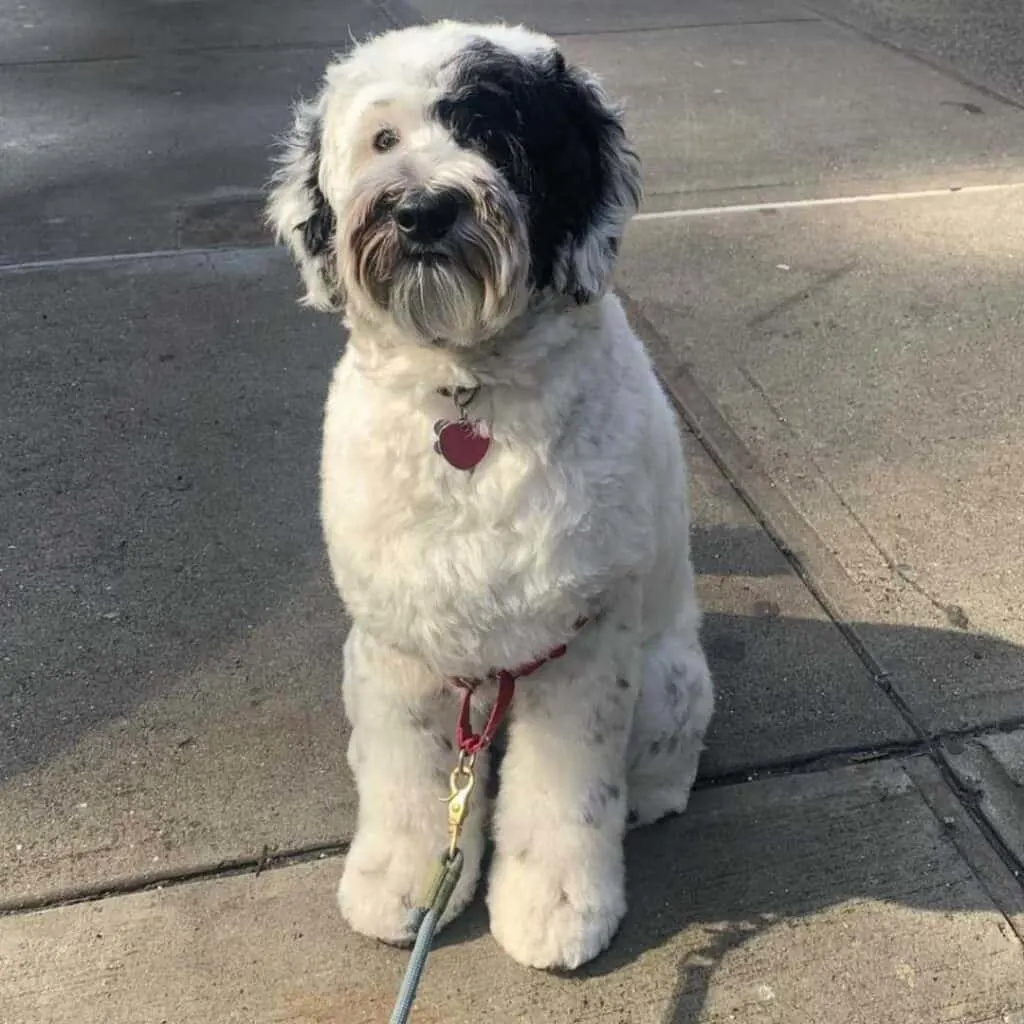
What is a Multigen Sheepadoodle?
A Multigenerational Sheepadoodle, also called a Multigen Sheepadoodle for short, refers to any generation beyond an F2. This includes the F2B, F2BB, F3, and so on.
When considering a Multigen Sheepadoodle, always talk to the breeder to understand which specific generation the dog is. There can be a lot of differences between an F2BB Sheepadoodle and an F3 Sheepadoodle, for example.
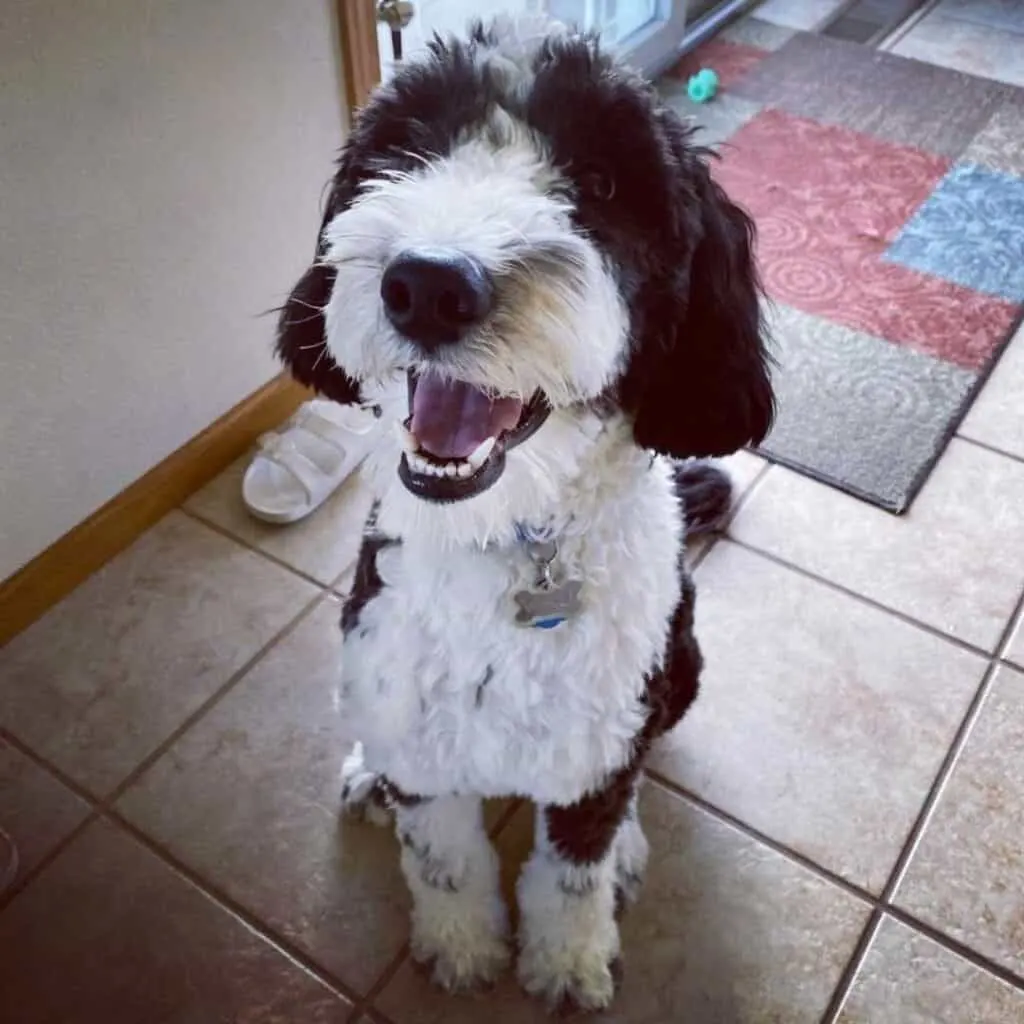
F1 vs F1B Sheepadoodle
When considering adding a Sheepadoodle puppy to your family, you’ll likely be choosing between these two very common generations. Both F1 and F1B Sheepadoodles have distinct pros and cons to consider when deciding which is right for you.
F1 Sheepadoodles will have more variation in their appearance and coat characteristics. This means it’ll be a coin flip as to how allergy-friendly and low-shedding they’ll be. The bright side to this is the slight additional health benefit of more genetic diversity.
F1B Sheepadoodles will usually have a more consistent coat similar to that of the Poodle. Your odds of having a dog that sheds and triggers your allergies significantly decreases. However, this generation is usually a bit more expensive than the F1.
Overall, if allergies are a concern, you’re better off choosing an F1B Sheepadoodle. If you don’t mind a little hair around the house, you may prefer an F1 Sheepadoodle which allows the wonderful personality and adorable appearance of the Old English Sheepdog to shine through more.
F1 vs F2 Sheepadoodle
While both of these types have roughly the same even split of DNA, you’ll find many more first generations than second generations. This is because an F1 Sheepadoodle has a bit more predictable traits.
For most people, the F1 generation is a great fit. If you’re looking for more traits from the Old English Sheepdog, maybe consider expanding your search to include F2 Sheepadoodles as well.
F1B vs F2B Sheepadoodle
These are two very similar generations with very similar pros and cons. The simple answer when comparing these two generations is to consider both. Instead of narrowing your search based on tiny differences between these generations, focus on other factors.
Look at aspects like the size of your Sheepadoodle, whether you’re looking for a male or female Sheepadoodle, and most importantly consider the reputation of the breeder.
Read More: How to Recognize a Responsible Doodle Breeder (and Avoid Puppy Mills!)
What Generation Sheepadoodle is Best?
This is a loaded question, as any Sheepadoodle owner will tell you the generation of their dog is the best one!
Which generation of Sheepadoodle is best is largely determined by what you’re looking for in a dog.
If your main concern is making sure your new best friend doesn’t shed or trigger your allergies, the best generations for you to consider are the F1BB, F2BB, F1B, and F2B in that order.
On the other hand, if you’re looking for the most availability, lowest price, and an easier to maintain coat, an F1 Sheepadoodle could be perfect for you! In addition, while higher generations probably won’t be available, you may be able to rescue a first generation Sheepadoodle from a shelter!
Unsure Which Generation Your Sheepadoodle Is?
There are likely many Sheepadoodle owners out there who have no idea which generation their dog is! While that’s not the end of the world, there are advantages to figuring this out.
Some people are stunned to learn that their “Sheepadoodle” actually wasn’t an Old English Sheepdog and Poodle mix at all, but rather a combination of other breeds!
If you’re curious, check out the Embark Dog DNA Test. This test is conducted by mail and involves a simple swab of your dog’s cheek.
Not only will it tell you the percentages of each breed in your dog’s DNA, but it also alerts you to potential health problems your Sheepadoodle’s genetics puts them at risk for. That will be super valuable information to help you and your veterinarian be on the lookout for and potentially prevent these health issues.




